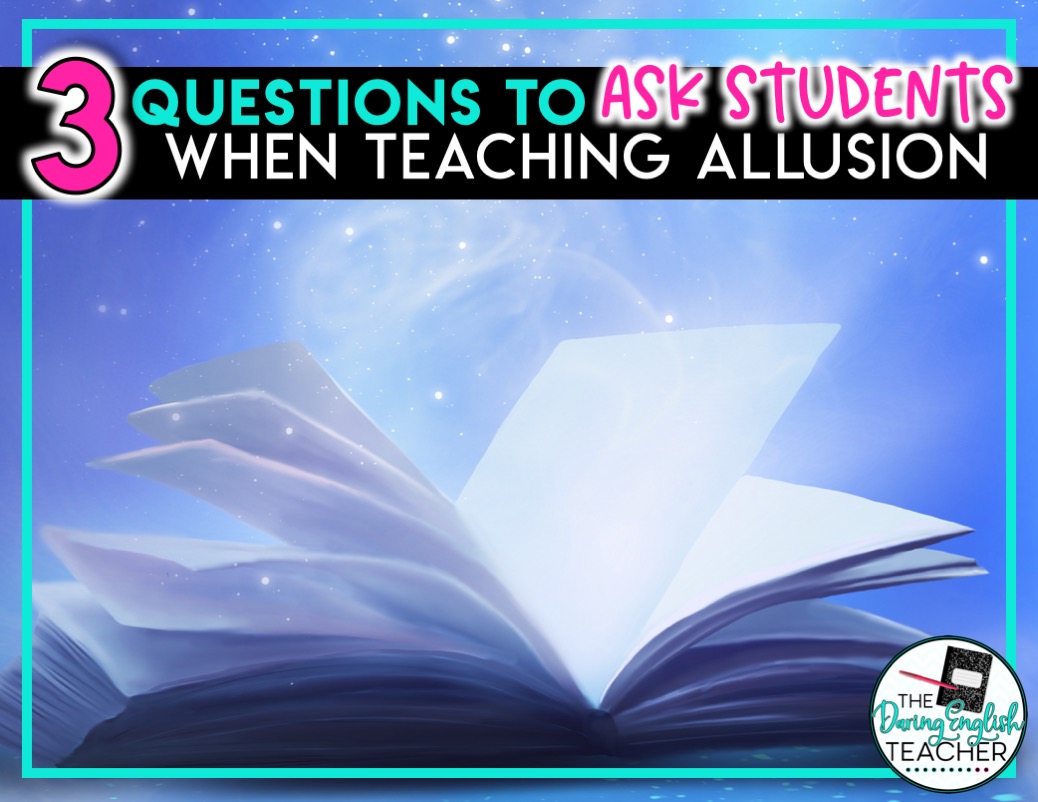When it comes to teaching middle school ELA and high school English students the art of literary analysis, allusions can often serve as a major roadblock. Students might approach a text with complete eagerness, clarity, and comfort, only for that peculiar-sounding reference to leave them hesitant and despondent — unsure of how, exactly, to proceed. They might wonder if this mysterious name adds essential context and meaning to the story. Or, they might simply think that the author liked that particular painting.
When plagued with these sorts of questions, the typical response is to either overstimulate or abandon the allusion. When teaching your students all about allusion during your next short story or novel student, pose these questions to your students.
1. What is the exact thing, person, or event to which the author is referring?
This question might seem like an obvious one, but frequently, when there is a relatively famous allusion at hand, further research might seem like an unnecessary prospect to readers. In reality, this is not true: there is always more to know. Before beginning the processes of analysis and reflection, we must remind students that the facts remain supreme. This means painting a full picture of whatever it is that’s being discussed. If the allusion is to a particular person, students should be aware of when and where this person lived, any significant acts or events they are associated with, and how they went about devising the reputation of themselves that we now know them by. Apply the same level of understanding to allusions of any kind.
2. What, if anything, does the allusion reflect about the text?
So as not to over or underestimate an allusion’s significance within a story, it is critical that students ponder this question profoundly and from all angles once they have learned the facts of an allusion. This task requires a great deal of critical thinking. Students should ask themselves, “how does what I know about this allusion relate to what I know about the story’s central plot, characters, setting, and style so far?”
These connections aren’t always so conspicuous, so this whole process should be carefully monitored and guided with an expert hand. Once students distinguish those connections, students must evaluate how strong they are: is the subject of allusion making the same mistakes the protagonist or speaker is making? Or is the relationship much more tenuous — perhaps, used only for the sake of physical comparison or description?
3. How would you talk about this person, place, or thing in a casual conversation?
Even with all this said and done, the allusion and all its bearings still might feel a little abstract to some students. One exercise to help students engage with the allusion in a personal way is to force them into conversation, literal conversation, with this person, place, or thing. Students should be free to engage creatively with the allusion as they please, as long as it remains the topic of conversation. They can perhaps take on the role of actors, living during the era in which the allusion existed — i.e. what would a group of common Athenians think of Socrates? By understanding how the subject of allusion is or might have been treated in real life, students will begin to develop an eye for the measure, depth, and relevance of the allusion’s impact, both in the story at hand and in the world at large.
4. What are your other personal experiences with this allusion?
Finally, before leaving any allusion to rest, it is always important that students reflect on their own personal relationship with it. This way, they will be much more likely to remember it and begin to see it as a true learning device, not something mindlessly tossed around by the author to look smart. Once students reflect on this relationship, where they have encountered the allusion in other contexts, they will grasp that allusions do not merely exist in abstract form. Every time we read them is a sign of the impact, however small, they have made.
Even with these questions in mind, there is still an infinite amount of ways to go about teaching and understanding the allusion. Surely, no one tool or model is right or wrong. But whatever process you end up utilizing, it should always involve a careful mix of researching, talking, thinking, and reflecting. With the proper dosage of these practices, students will have the allusion readily conquered in no time.
Here are some rhetorical analysis teaching resources you may like:
Sticky Note Literary Analysis
Literary Analysis Mini Flip Book
Response to Literature Task Cards



